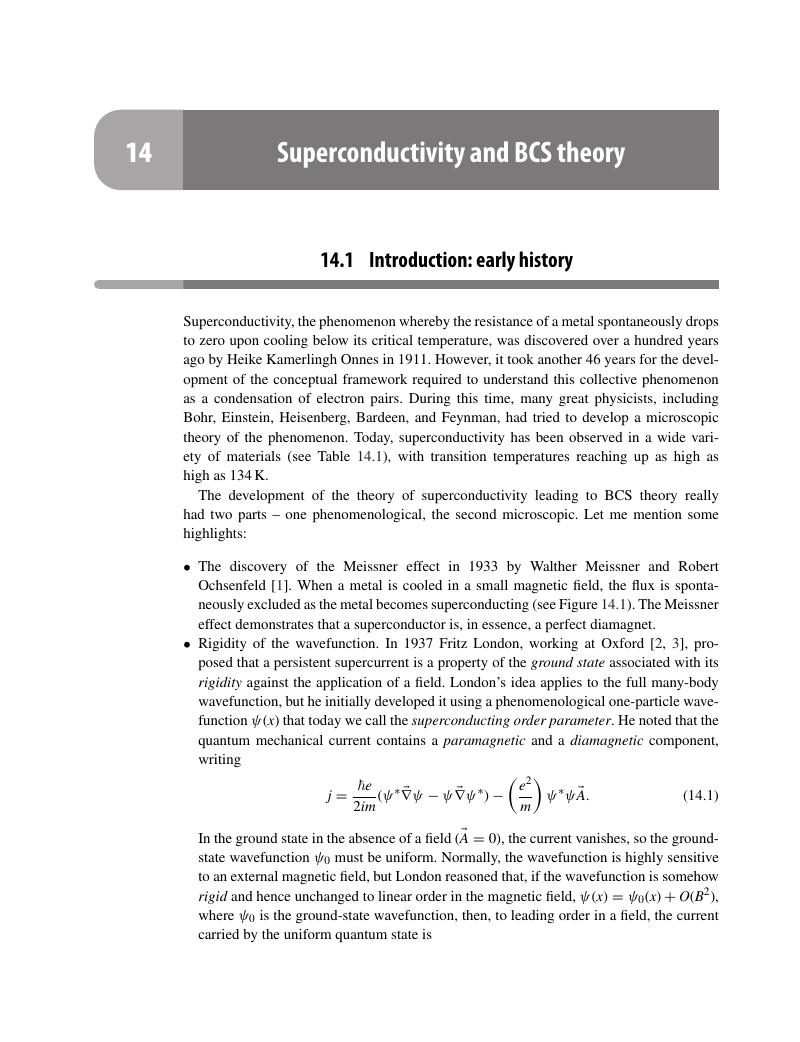Book contents
- Frontmatter
- Dedication
- Contents
- Preface
- Introduction
- 1 Scales and complexity
- 2 Quantum fields
- 3 Conserved particles
- 4 Simple examples of second quantization
- 5 Green's functions
- 6 Landau Fermi-liquid theory
- 7 Zero-temperature Feynman diagrams
- 8 Finite-temperature many-body physics
- 9 Fluctuation–dissipation theorem and linear response theory
- 10 Electron transport theory
- 11 Phase transitions and broken symmetry
- 12 Path integrals
- 13 Path integrals and itinerant magnetism
- 14 Superconductivity and BCS theory
- 15 Retardation and anisotropic pairing
- 16 Local moments and the Kondo effect
- 17 Heavy electrons
- 18 Mixed valence, fluctuations, and topology
- Epilogue: the challenge of the future
- Author Index
- Subject Index
- References
14 - Superconductivity and BCS theory
Published online by Cambridge University Press: 05 December 2015
- Frontmatter
- Dedication
- Contents
- Preface
- Introduction
- 1 Scales and complexity
- 2 Quantum fields
- 3 Conserved particles
- 4 Simple examples of second quantization
- 5 Green's functions
- 6 Landau Fermi-liquid theory
- 7 Zero-temperature Feynman diagrams
- 8 Finite-temperature many-body physics
- 9 Fluctuation–dissipation theorem and linear response theory
- 10 Electron transport theory
- 11 Phase transitions and broken symmetry
- 12 Path integrals
- 13 Path integrals and itinerant magnetism
- 14 Superconductivity and BCS theory
- 15 Retardation and anisotropic pairing
- 16 Local moments and the Kondo effect
- 17 Heavy electrons
- 18 Mixed valence, fluctuations, and topology
- Epilogue: the challenge of the future
- Author Index
- Subject Index
- References
Summary

Information
- Type
- Chapter
- Information
- Introduction to Many-Body Physics , pp. 486 - 541Publisher: Cambridge University PressPrint publication year: 2015
